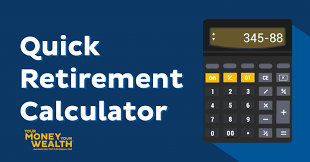Unlock the potential of your investments by harnessing the power of compound interest with our essential financial tool compound rate calculator (Compound amount Calculator). This user-friendly calculator will help you set realistic goals, make informed decisions, and fully comprehend the impact of compounding on your wealth-building journey.Compound effect calculator will help you to understand effect of power compounding.
Compound Interest Calculator
What is compound interest?
Compound interest is a type of interest that is calculated on the initial amount borrowed or invested, as well as any interest that accrues over time. Unlike simple interest, which only applies to the original amount, compound interest is calculated on the total amount, including any interest that has already been earned.
Benefits of compound interest
Compound interest is a financial concept that can have a big impact on your savings and investments. It is the interest that is earned on both the principal amount and the interest that has already been accumulated. This compounding effect means that your money can grow faster over time, making compound interest a powerful tool for building wealth.
Key benefits of compound interest:
Increased earning potential: With compound interest, your money can earn interest not just on the initial principal amount, but also on the interest that has already been earned. This means that over time, your savings or investments can grow faster than they would with simple interest.
Time is on your side: Compound interest works best over longer periods of time. The longer your money is invested, the more time it has to grow and compound. This is why it’s important to start saving and investing early in life, even if it’s just a small amount.
Helps combat inflation: Inflation is the rate at which the general level of prices for goods and services is rising, and it erodes the purchasing power of your money over time. Compound interest can help combat the effects of inflation by growing your savings or investments at a rate that keeps up with or even exceeds inflation.
Builds wealth: Over time, the compounding effect of compound interest can lead to significant growth in your savings or investments. This can help you build wealth and achieve your financial goals, such as buying a house, starting a business, or retiring comfortably.
Diversification of investments: Investing in different assets that compound interest can help you diversify your investment portfolio. This can reduce the risk of losses from any one investment and help you achieve a more stable return on your overall investment.
The Compound Interest Formula – How is compound interest calculated?
The formula for calculating compound interest is:
A = P(1 + r/n)^(nt)
Where:
- A = the total amount of money at the end of the investment period
- P = the principal or initial amount of money invested
- r = the annual interest rate as a decimal
- n = the number of times the interest is compounded per year
- t = the number of years the investment is held
Let’s break down the formula further to understand how it works.
First, the term (1 + r/n)^(nt) is the compound interest factor. This factor represents the number of times interest is compounded over the investment period. For example, if interest is compounded annually, then n = 1, and if interest is compounded monthly, then n = 12.
The exponent nt represents the number of compounding periods over the investment period. For example, if you invest for 5 years and interest is compounded annually, then t = 5 and n = 1, so nt = 5.
The formula calculates the total amount of money at the end of the investment period by multiplying the principal amount by the compound interest factor. This takes into account the interest earned on the initial investment as well as any accumulated interest over time.
To see the formula in action, let’s look at an example. Say you invest $10,000 at an annual interest rate of 5%, compounded monthly for 5 years. Using the formula, we can calculate the total amount of money at the end of the investment period as follows:
A = 10000(1 + 0.05/12)^(12*5) A = 10000(1.004167)^60 A = 10000(1.276281) A = $12,762.81
So, the total amount of money at the end of the investment period is $12,762.81, which includes the initial investment of $10,000 plus $2,762.81 in interest.
How to calculate monthly compound interest
Monthly compound interest is a type of compound interest where interest is calculated and added to the principal amount every month. This means that the interest earned in each month is added to the principal amount for the next month, and interest is calculated on this new amount. In this way, the interest grows exponentially over time.
To calculate monthly compound interest, you need to know the following variables:
- Principal amount: the initial amount of money invested or borrowed
- Interest rate: the rate at which the interest is calculated, usually expressed as a percentage per year
- Time: the length of time for which the interest is calculated, usually expressed in months
The formula for calculating monthly compound interest is:
A = P * (1 + r/n)^(n*t)
Where:
- A is the total amount of money after t months
- P is the principal amount
- r is the interest rate, expressed as a decimal (e.g. 5% is 0.05)
- n is the number of times interest is compounded in a year (for monthly compounding, n = 12)
- t is the time period, expressed in years (for monthly compounding, t = time in months/12)
Let’s say you have a principal amount of $10,000, an interest rate of 5%, and you want to calculate the total amount after 2 years of monthly compounding. Using the formula above:
A = $10,000 * (1 + 0.05/12)^(12*2) = $11,038.98
This means that after 2 years of monthly compounding, your total amount would be $11,038.98, with an interest earned of $1,038.98.
It’s important to note that the frequency of compounding has a significant impact on the amount of interest earned. Monthly compounding generally results in higher interest earned compared to annual or quarterly compounding, as interest is being calculated and added to the principal amount more frequently.
In conclusion, calculating monthly compound interest involves using the formula A = P * (1 + r/n)^(n*t), where you input the principal amount, interest rate, and time period in months. Monthly compounding can result in significant interest earned over time, making it a popular choice for many investors and lenders.
How to Make the Most of Compound Interest
Now that you know how compound interest is calculated, how can you make the most of it? Here are a few tips:
Start early: The earlier you start investing, the more time your money has to grow with compound interest.
Invest regularly: If you’re investing in stocks or bonds, consider setting up regular contributions to take advantage of compound interest over time.
Look for high-yield savings accounts: Some savings accounts offer higher interest rates than others, so shop around to find the best option for you.
Understand the risks: While compound interest can help grow your savings, it’s important to understand the risks associated with any investment.
Compound interest is a powerful tool for growing your money over time. By reinvesting the interest earned, you can earn interest on interest, which can help your money grow faster than simple interest. This is why many savings accounts, investment accounts, and loans use compound interest.
There are several types of compound interest calculators available, including quarterly, monthly, and weekly calculators. These calculators can help you estimate how much your investment or loan will be worth over time.
What is Compounding with Additional Deposits?
Compounding is the process of earning interest on your principal balance and any interest that has already accrued. With compounding, your earnings can grow exponentially over time. When you compound with additional deposits, you’re adding to your principal balance on a regular basis. This means that you’ll earn even more interest than you would if you simply left your initial deposit untouched.
Let’s say you have $10,000 in a savings account with a 5% annual interest rate. If you didn’t touch that money for 10 years, you’d earn $6,386.95 in interest. However, if you also made a $100 monthly deposit to that account, your total earnings over 10 years would be $18,170.94.
The Benefits of Compounding with Additional Deposits
The main benefit of compounding with additional deposits is that it allows you to grow your savings faster. By making regular contributions to your account, you’re increasing your principal balance, which means that you’ll earn more interest over time.
Another benefit of this strategy is that it helps you stay disciplined about saving. When you make regular contributions to your account, you’re building a habit of saving. This can be especially helpful if you’re trying to reach a specific savings goal, like building an emergency fund or saving for a down payment on a house.
Tips for Making the Most of Compounding with Additional Deposits
If you’re interested in using compounding with additional deposits to grow your savings, here are some tips to keep in mind:
Start early: The earlier you start making regular contributions to your savings account or investment portfolio, the more time your money will have to compound.
Be consistent: Make regular contributions to your account, even if they’re small. Consistency is key when it comes to building savings over time.
Automate your deposits: Set up automatic transfers from your checking account to your savings account or investment portfolio. This will help you stay on track with your contributions and make it easier to save.
Look for accounts with high interest rates: The higher your interest rate, the more you’ll earn in interest over time.
Consider investing: If you’re looking to grow your savings even faster, you may want to consider investing in the stock market or other investment vehicles.
FAQ
Q: What is a Compound Interest Calculator?
A: A Compound Interest Calculator is an online tool that calculates the interest earned on an investment over a period of time, taking into account the compounding frequency and interest rate.
Q: How does a Compound Interest Calculator work?
A: A Compound Interest Calculator uses a mathematical formula to calculate the growth of your investment over time. You enter the principal amount, the interest rate, the compounding frequency, and the duration of the investment, and the calculator provides you with the final amount.
Q: What is compounding?
A: Compounding refers to the process of reinvesting your earnings back into your investment. This means that as your investment grows, the amount of interest earned also increases.
Q: Why is compounding important?
A: Compounding is important because it allows your investment to grow exponentially over time. By reinvesting your earnings, you earn interest not only on your principal investment, but also on the interest earned in previous periods.
Q: What is the difference between simple interest and compound interest?
A: Simple interest is calculated only on the principal amount of the investment. Compound interest, on the other hand, takes into account the interest earned in previous periods and adds it to the principal amount, resulting in a higher growth rate.
Q: What is the benefit of using a Compound Interest Calculator?
A: A Compound Interest Calculator allows you to quickly and easily determine the growth of your investment over time. It helps you understand the impact of compounding on your investment, and helps you make informed investment decisions.
Q: Can I use a Compound Interest Calculator for any type of investment?
A: Yes, you can use a Compound Interest Calculator for any type of investment, including savings accounts, bonds, stocks, and mutual funds.
Q: Is a Compound Interest Calculator accurate?
A: A Compound Interest Calculator is accurate as long as you enter the correct information, including the principal amount, interest rate, compounding frequency, and investment duration. However, it is important to remember that the calculator provides an estimate and the actual growth of your investment may vary due to market fluctuations and other factors.
Q: Can a Compound Interest Calculator help me plan my investment strategy?
A: Yes, a Compound Interest Calculator can help you plan your investment strategy by allowing you to see the impact of different interest rates, compounding frequencies, and investment durations on your investment growth. It can help you make informed decisions about the best investment options for your financial goals.

Compound Rate Calculator: Earning More with Less
The Compound Rate Calculator is a financial tool that holds the key to growing your wealth exponentially over time. This calculator is an essential resource for anyone looking to harness the magic of compounding to achieve their financial goals. In this article, we’ll explore the concept of compound interest and how the Compound Rate Calculator can help you make the most of your investments.
The Compound Rate Calculator: Unleashing Financial Potential
The Compound Rate Calculator is your ally in making the most of compound interest. Here’s how it works:
Principal Amount: Begin by inputting the initial amount you plan to invest or save.
Annual Interest Rate: Specify the annual interest rate, usually as a percentage. The Calculator works its magic with this rate.
Compounding Frequency: You can choose how often your interest is compounded, be it annually, semi-annually, quarterly, monthly, or even daily.
Investment Period: Select the time horizon for your investment. The longer, the better when it comes to compound interest.
Calculating the Compounding Effect
The Compound Rate Calculator takes your input and calculates the compound amount. This amount represents the total value of your investment, including both the principal and the interest earned over time. It offers a clear projection of your wealth’s growth.
The Compound Amount Calculator: The Heart of Compound Interest
The Compound Amount Calculator is your guide to understanding the power of compound interest. By entering your data into this calculator, you can see how your money multiplies over time, allowing you to make informed financial decisions.
The Compound Effect Calculator: Transforming Your Financial Future
The Compound Effect Calculator helps you comprehend the significance of regular, consistent contributions to your investments. It showcases how small, regular deposits can lead to significant wealth growth over time.
Conclusion: The Compounding Effect—Your Path to Wealth
The Compound Rate Calculator, along with the Compound Amount Calculator and Compound Effect Calculator, empowers you to take charge of your financial future. With a grasp of compound interest and the right financial tools, you can watch your wealth grow exponentially over time. Whether you’re saving for retirement, an education fund, or any long-term goal, compound interest is the key to achieving financial success. Start using these calculators today, and unlock your financial potential with the magic of compounding.
Legal Notices and Disclaimer
All Information contained in and produced by the ModernCalculators.com is provided for educational purposes only. This information should not be used for any Financial planning etc. Take the help from Financial experts for any Finace related Topics. This Website will not be responsible for any Financial loss etc.





